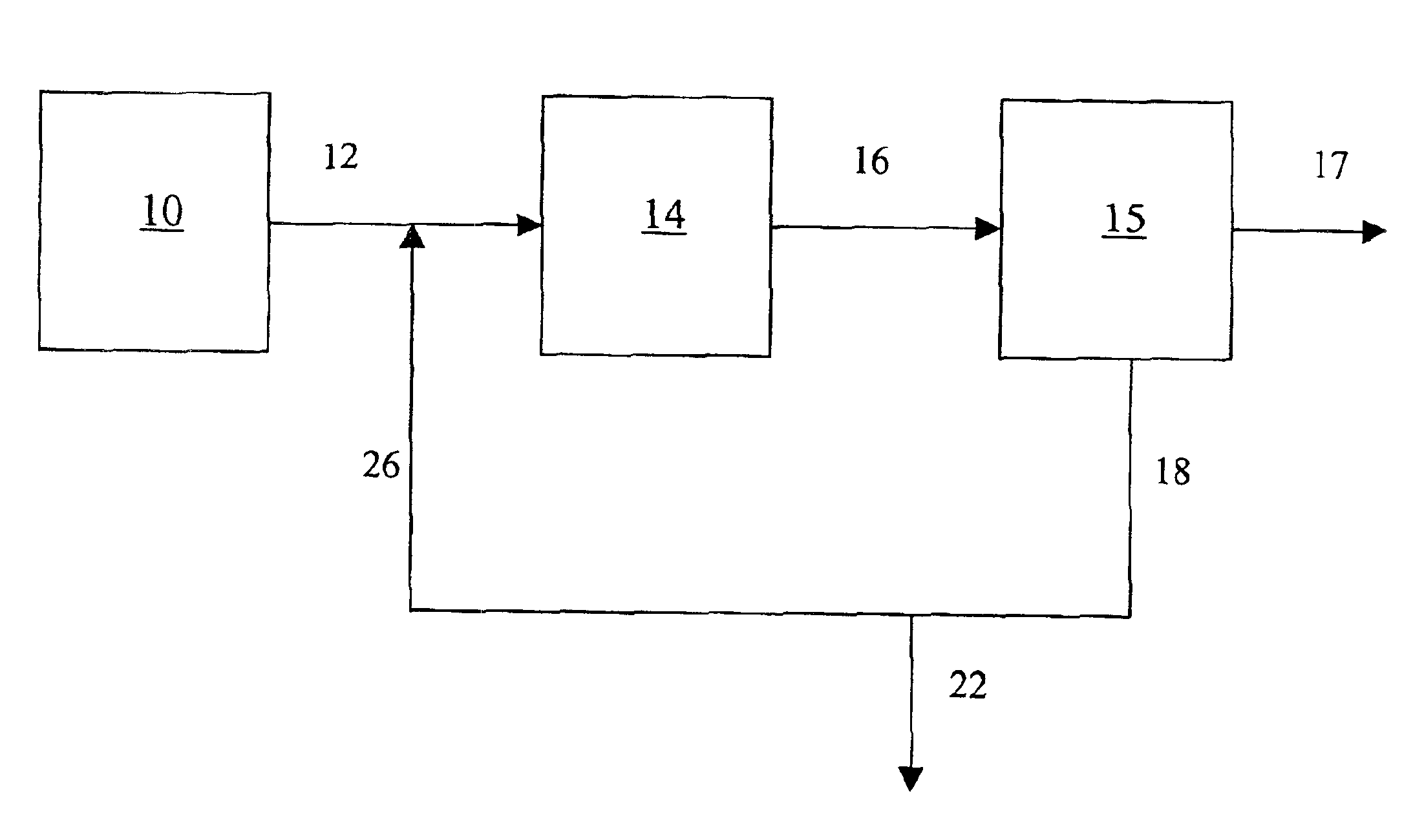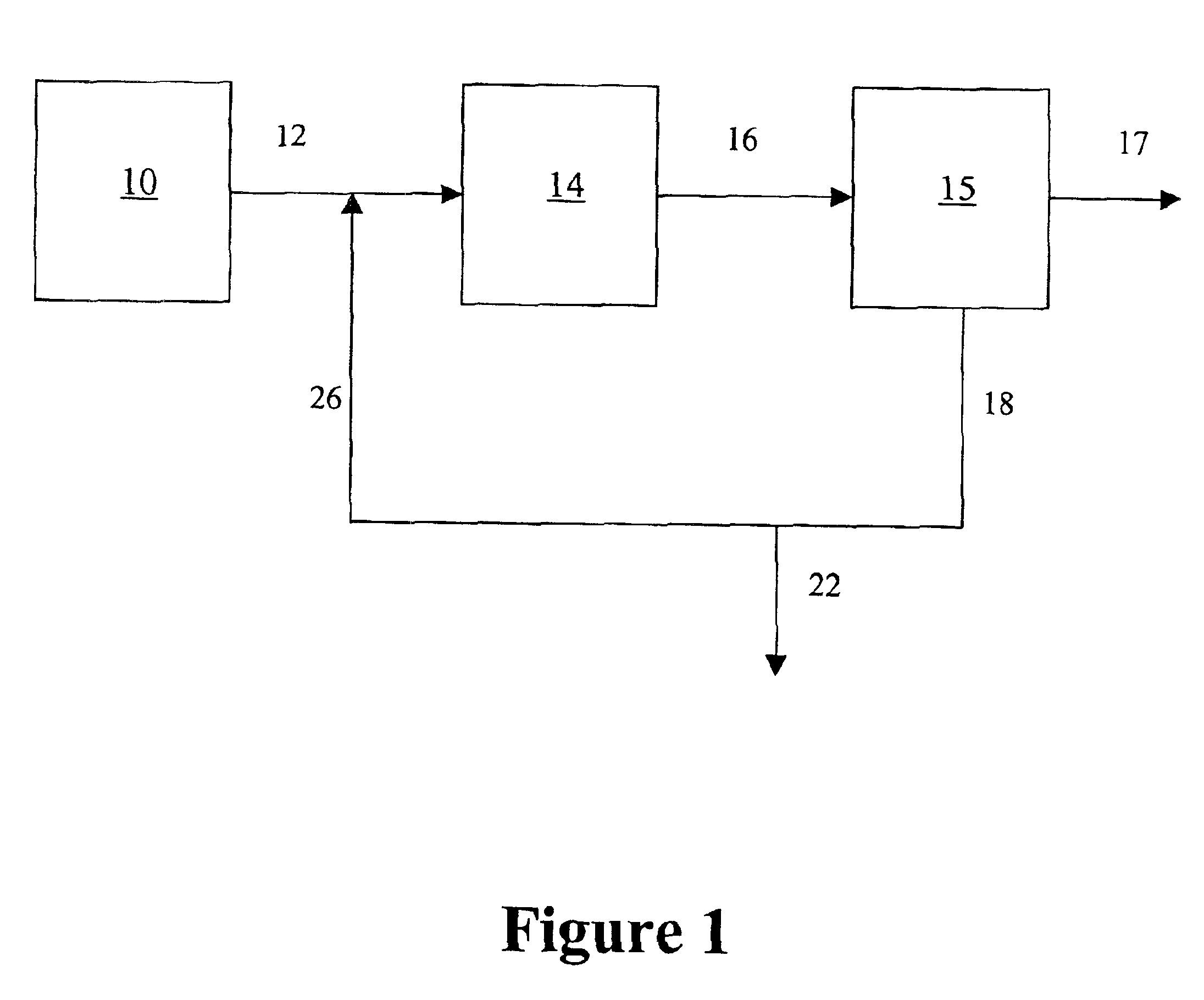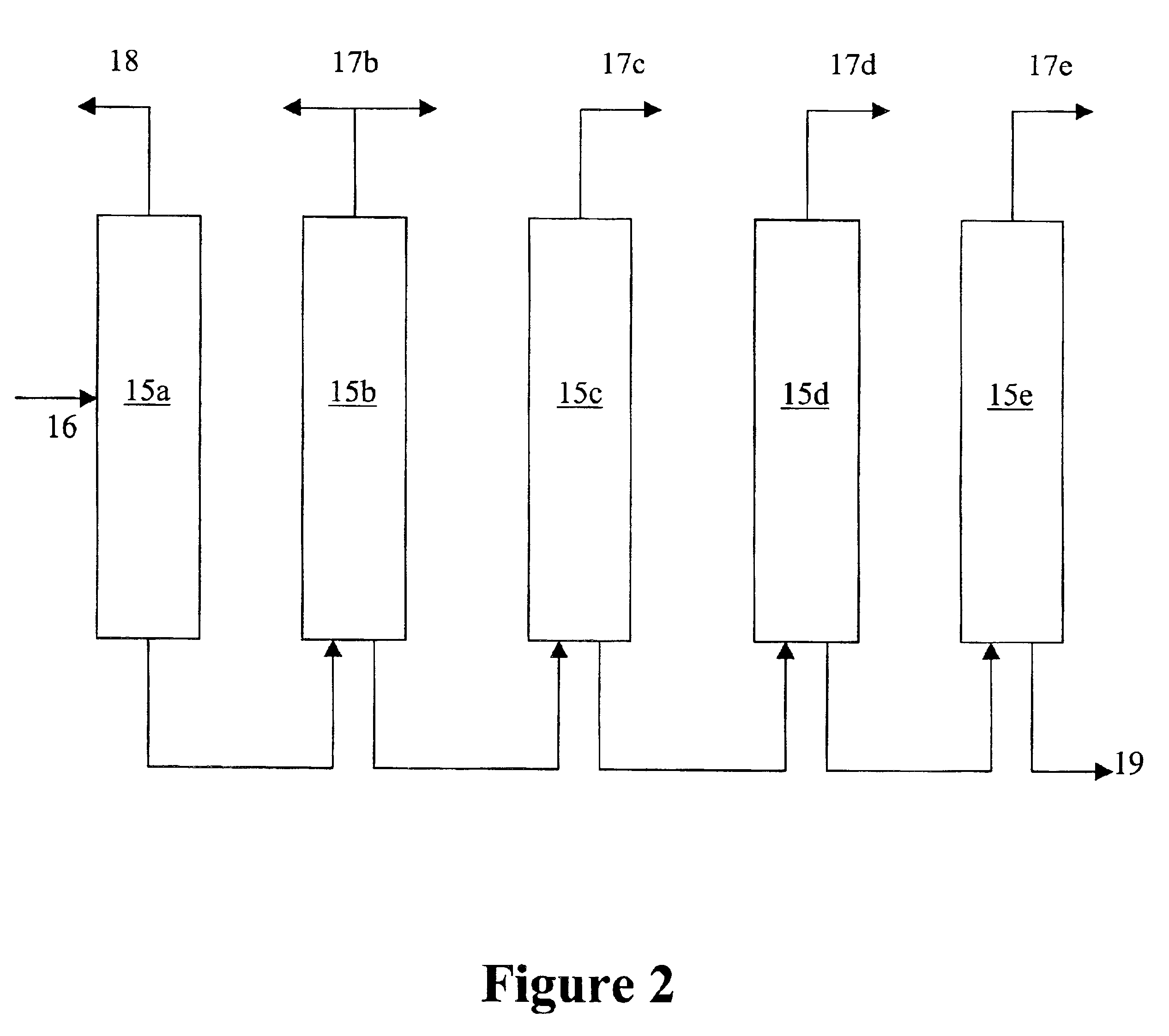Production of higher olefins
a technology of olefin and branched alcohol, which is applied in the field of making olefin derivative systems, can solve the problems of inferior plasticizers, olefins contain significant amounts, and branched alcohols have relatively little commercial valu
- Summary
- Abstract
- Description
- Claims
- Application Information
AI Technical Summary
Benefits of technology
Problems solved by technology
Method used
Image
Examples
Embodiment Construction
In order to reduce the associated costs of producing higher olefins, this invention uses a portion of a hydrocarbon product from an oxygenate to olefin unit to make a novel hydrocarbon C4+ fraction. Preferably, the oxygenate to olefin unit is a methanol-to-olefin (MTO) unit. This C4+ fraction contains greater than 60% by weight, preferably greater than 80% by weight, C4+ olefin. The C4+ fraction contains a relatively high olefin content, i.e., low amounts of paraffin, very little diene, and relatively low degree of branched olefin. In the invention an olefin stream with greater than or equal to about 60% by weight olefin is referred to as an olefin stream having a high olefin content. Conversely, an olefin stream with less than about 60% by weight olefin is referred to an olefin stream having a low olefin content. Also, the C4+ fraction contains relatively little or no sulphur and nitrogen compounds that tend to deactivate oligomerization catalysts used in a higher olefin process.
Th...
PUM
| Property | Measurement | Unit |
|---|---|---|
| pressures | aaaaa | aaaaa |
| pressure | aaaaa | aaaaa |
| pressure | aaaaa | aaaaa |
Abstract
Description
Claims
Application Information
 Login to View More
Login to View More - R&D
- Intellectual Property
- Life Sciences
- Materials
- Tech Scout
- Unparalleled Data Quality
- Higher Quality Content
- 60% Fewer Hallucinations
Browse by: Latest US Patents, China's latest patents, Technical Efficacy Thesaurus, Application Domain, Technology Topic, Popular Technical Reports.
© 2025 PatSnap. All rights reserved.Legal|Privacy policy|Modern Slavery Act Transparency Statement|Sitemap|About US| Contact US: help@patsnap.com



